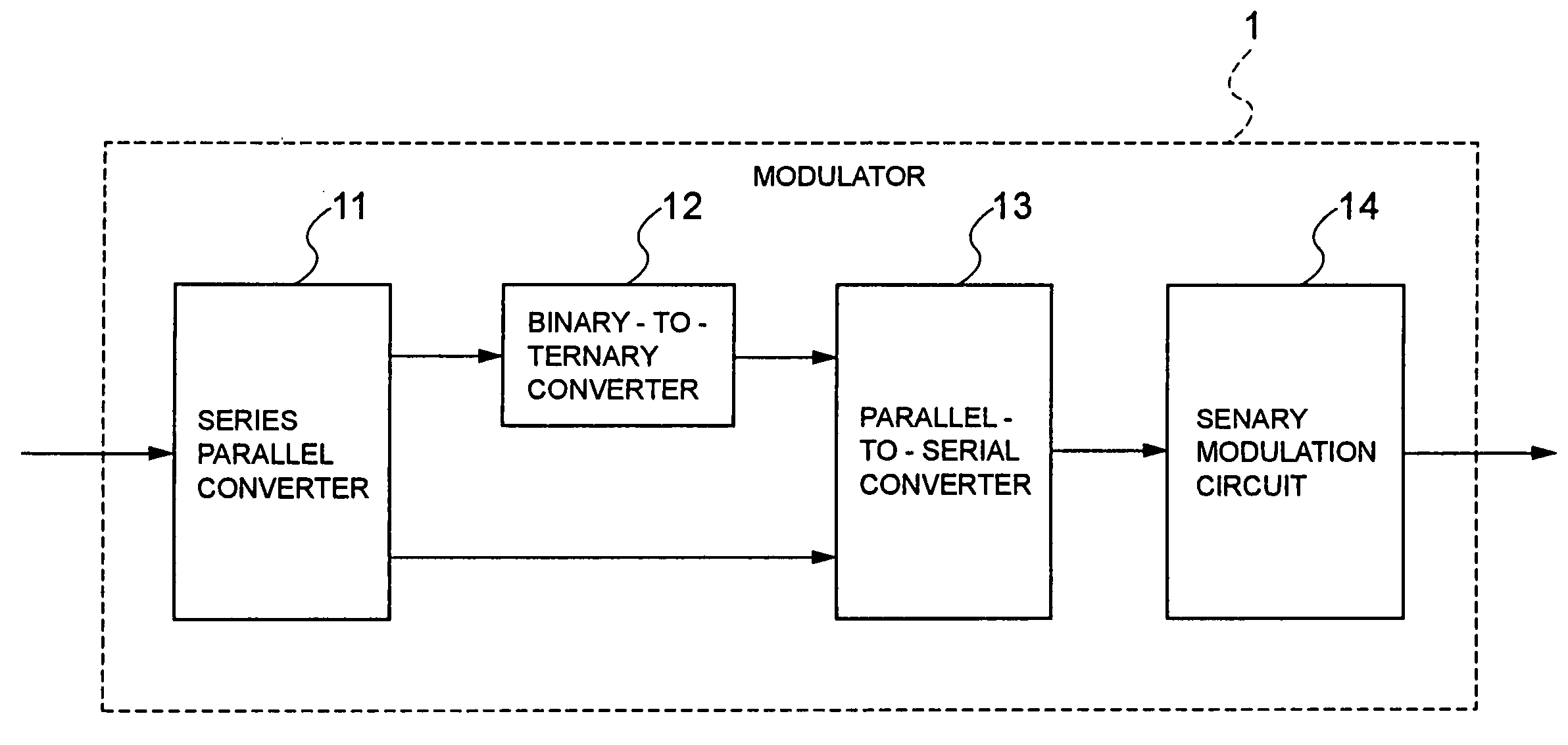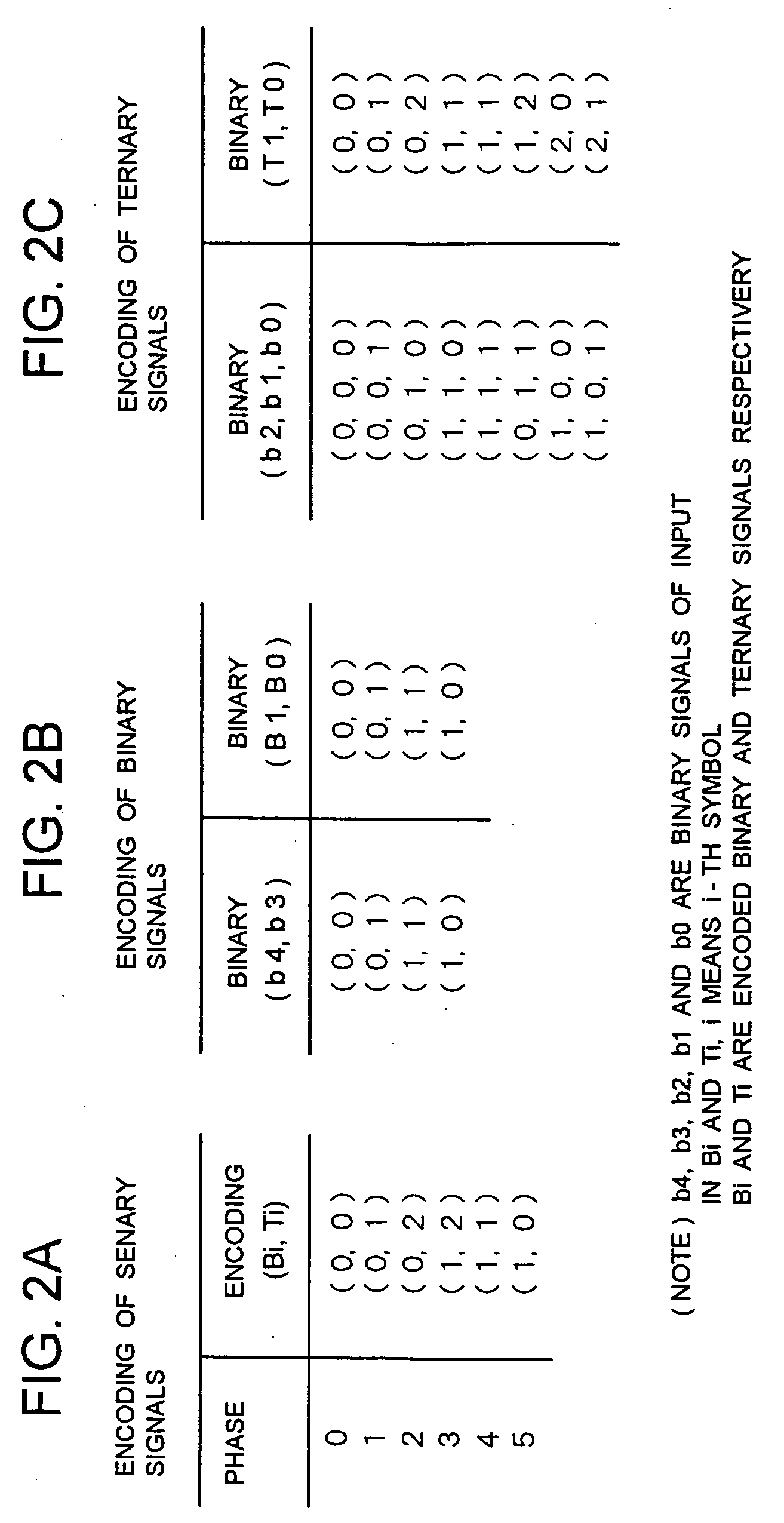Modulation and demodulation system, modulator, demodulator and phase modulation method and phase demodulation method used therefor
- Summary
- Abstract
- Description
- Claims
- Application Information
AI Technical Summary
Benefits of technology
Problems solved by technology
Method used
Image
Examples
example
[0168] Next, the embodiment of the present invention will be described by referring to the drawings. The modulation and demodulation system (communication system) according to an embodiment of the present invention has the same configuration as well as operation as the communication system 3 according to the above-mentioned second embodiment of the present invention shown in FIG. 1.
[0169] The configuration of the modulator according to an embodiment of the present invention is the same as that of the first embodiment (FIG. 6). In FIG. 6, the modulator 1 is configured by the series parallel converter 11, binary-to-ternary converter 12, a parallel-to-serial converter (multiplexer) 13 and a senary modulation circuit 14.
[0170] The series parallel converter 11 inputs serial binary signal data of 5 bits and outputs parallel binary signal data of 3 bits and 2 bits. The binary-to-ternary converter 12 converts the parallel binary signal data of 3 bits to a ternary signal. The parallel-to-s...
PUM
 Login to View More
Login to View More Abstract
Description
Claims
Application Information
 Login to View More
Login to View More - R&D
- Intellectual Property
- Life Sciences
- Materials
- Tech Scout
- Unparalleled Data Quality
- Higher Quality Content
- 60% Fewer Hallucinations
Browse by: Latest US Patents, China's latest patents, Technical Efficacy Thesaurus, Application Domain, Technology Topic, Popular Technical Reports.
© 2025 PatSnap. All rights reserved.Legal|Privacy policy|Modern Slavery Act Transparency Statement|Sitemap|About US| Contact US: help@patsnap.com



